-
 Taewoong Medical Newsletter_CONNECT_Q1.2021 21.03.31
Taewoong Medical Newsletter_CONNECT_Q1.2021 21.03.31 -
 Biliary RFA - ELRA
Biliary RFA - ELRABiliary RFA - ELRA● DATE: Thursday, March 18th 2021● TIME: CET 12PM / India 4:30PM / Korea 8PM / Thailand 6PM● MODERATOR: Dr. Nageshwar Reddy● SPEAKERS: Dr. Jae Hee Cho / Dr. Terence Wong / Dr. Rungsun Rerknimitr● JOIN THE WEBINAR: http://bit.ly/ELRA_W
21.03.05 -
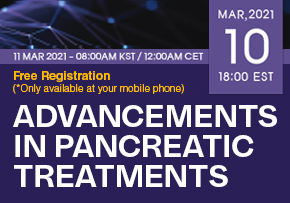 Advancements in Pancreatic Treatments
Advancements in Pancreatic TreatmentsAdvancements in Pancreatic Treatments "Learn about the advancements and experiences of using RFA technology to treat pancreatic masses, demonstrating through four detailed procedure videos"● DATE: March 10th 2021● TIME: 10th Mar 2021 - 18:00 EST / 11th Mar 2021 - 08:00AM KST, 12:00AM CET● MODERATOR: Gregory B. Haber, MD ● SPEAKERS: Nirav Thosani, MD / Tamas A. Gonda, MD● PANEL: Curtis J. Wray, MD● FREE REGISTRATION: https://lnkd.in/ebxrD4J *Only available at your mobile phone
21.03.04 -
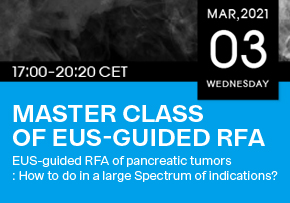 Master Class of EUS-guided RFA (EUS-guided RFA of pancreatic tumors : How to do in a large Spectrum
Master Class of EUS-guided RFA (EUS-guided RFA of pancreatic tumors : How to do in a large SpectrumMaster Class of EUS-guided RFAEUS-guided RFA of pancreatic tumors : How to do in a large Spectrum of indications?*in cooperation with professional media company SYNAPSLIVE BROADCAST ● DATE: Wednesday, March 3rd 2021● TIME: 17:00-20:20 (CET)● COURSE DIRECTOR: Prof. Marc Barthet ● INVITED PANEL LIST: Alberto Larghi / Geoffroy Vanbiervliet / Gasmi Mohamed / Gonzalez Jean-Michel● JOIN: https://livestream.com/synapslive/twgmb
21.02.23 -
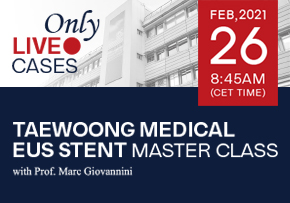 [ONLY LIVE CASES] Taewoong Medical EUS Stent Master Class with Prof. Marc Giovannini
[ONLY LIVE CASES] Taewoong Medical EUS Stent Master Class with Prof. Marc GiovanniniTaewoong Medical EUS Stent Master Classwith Prof. Marc Giovannini *in cooperation with professional media company SYNAPSLIVE LIVE BROADCAST● DATE: Friday, February 26th 2021● TIME: 8:45AM (CET TIME)● COURSE DIRECTOR: Prof. Marc Giovannini ● INVITED PANEL LIST: Dr. Sundeep Lakhtakia (India) / Dr. Khanh Do-Cong Pham (Norway) / Prof. Anna Kozlowska (Poland) / Prof. Tomas Hucl (Czech)● FREE REGISTRATION LINK: https://livestream.com/synapslive/twgmg
21.02.16 -
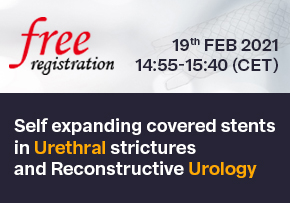 [ESSM 2021] Self expanding covered stents in Urethral strictures and Reconstructive Urology
[ESSM 2021] Self expanding covered stents in Urethral strictures and Reconstructive UrologyFREE REGISTRATION [European Society of Sexual Medicine Virtual 2021]Industry Symposium 1 Sponsored by Taewoong MedicalSelf expanding covered stents in Urethral strictures and Reconstructive Urology● DATE: Friday, February 19th 2021● TIME: 14:55-15:40 (CET)● CHAIRS: Jalil Hosseini (Iran) / Giuseppe Carrieri (Italy) ● SPEAKERS: Omid Sedigh (Italy) / Fariborz Bagheri (UAE) / Ettore Dalmasso (Italy) / Ahmad Shamsodini (Qatar)● REGISTER LINK: http://bit.ly/ESSM2021
21.02.10 -
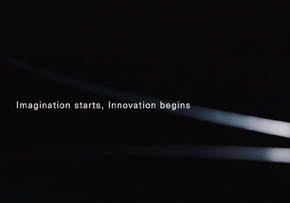 Taewoong Medical New Company Introduction Video 2021
Taewoong Medical New Company Introduction Video 2021Taewoong Medical New Company Introduction Video 2021Introducing Taewoong Medical’s new company introduction video herewith.If you want to see the full video, please click the link below.
21.01.19 -
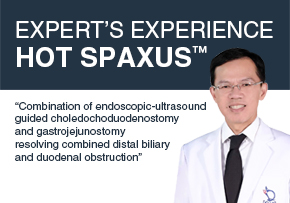 Expert’s Experience: HOT SPAXUS™
Expert’s Experience: HOT SPAXUS™Associate Professor Pradermchai Kongkam, MD, is currently working at gastrointestinal endoscopy excellence center, King Chulalongkorn Memorial Hospital, Bangkok, Thailand. He is the current president of the Thai Association for GI Endoscopy (TAGE). He is well known as an expert in endoscopic ultrasound (EUS) with advanced skill of both diagnostic and therapeutic EUS. He has joined many famous international endoscopy meetings worldwide as lecturers, demonstrators, and trainers. He has trained many young Thai and international doctors to be endosongraphers and endoscopists. His present active research include EUS-guided biliary drainage in malignant hilar biliary obstruction, EUS-guided radiofrequency ablation, EUS-guided needle based confocal laser endomicroscopy. In this conference, he will join and share his experience of novel cutting edge EUS technologies with audience.Combination of endoscopic-ultrasound guided choledochoduodenostomy and gastrojejunostomy resolving combined distal biliary and duodenal obstructionEndoscopy 2020 Nov 19 doi: 10.1055/a-1294-9399PatientA 68-year-old man presented with abdominal pain, jaundice, and weight loss for 1 month. Abdominal computed tomography revealed a periampullary mass measuring 3.5 × 3.5 × 3.2 cm with dilated bile ductProcedureAn endoscopic retrograde cholangiopancreatography (ERCP) procedure was not possible owing to a large friable ampullary mass causing supra-ampullary duodenal obstruction. An endoscopic ultrasound-guided choledochoduodenostomy (EUS-CDS) was consequently performed with a linear echoendoscope (GF-UCT180; Olympus, Aizu, Japan). A dilated distal common bile duct (CBD) from an ampullary was shown. A 19-gauge endoscopic ultrasound-guided fine-needle aspiration (EUS-FNA) needle with an angled 0.025-inch guidewire was used for puncturing. A 6-Fr cystotome and a 4-mm balloon dilatation catheter (were used for dilation. An 8 × 12-mm lumenapposing metal stent (LAMS) (Niti-S Spaxus; Taewoong Medical Co., Ilsan, Korea) was successfully placed transduodenally into the distal CBD (▶Fig. 4). Subsequently, an EUS-guided gastrojejunostomy was performed. A 10-Fr nasobiliary catheter was placed into the jejunum to flush a mix of diluted contrast, saline, and methylene blue into the lumen of the jejunum in order to distend the small bowel loop. A 16 × 20-mm LAMS with an electrocautery delivery system (Niti-S Spaxus; Taewoong Medical Co.) was successfully placed transgastrically into the lumen of the jejunum (▶Fig. 5). The patient resumed diet with a decline of bilirubin level at 48 hours after the procedure without adverse events.Please visit to website of Thieme to get the full text of this case report.
21.01.12 -
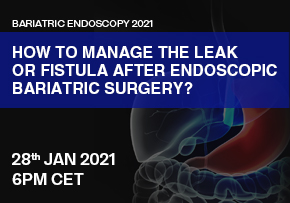 Bariatric Endoscopy 2021
Bariatric Endoscopy 2021[Bariatric Endoscopy 2021]How to manage the leak or fistula after Endoscopic bariatric surgery?● DATE: Thursday, January 28th, 2021● TIME: 6PM CET● LECTURE: Devinder Bansi (UK),Stephane Koch (France), Hany Shehab (Egypt)● REGISTER LINK: http://bit.ly/BetaMega_W
21.01.08 -
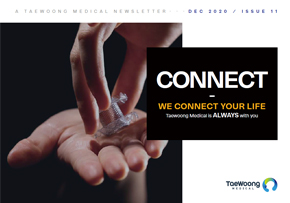 CONNECT GLOBAL issue 11, 2020 21.01.06
CONNECT GLOBAL issue 11, 2020 21.01.06 -
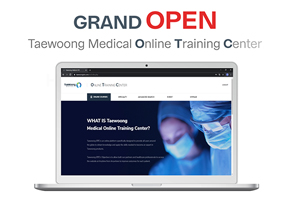 Taewoong Medical Online Training Center – Online Education Platform OPEN
Taewoong Medical Online Training Center – Online Education Platform OPENTaewoong Medical Online Training Center– Online Education Platform OPENTaewoong Medical's Online Training Center an education platform for online training has officially been opened. From this point on, you will be able to check and view videos related to Taewoong products at anytime and anywhere through the Taewoong Medical OTC site. Taewoong Medical plan to continuously update various contents, and we hope that Taewoong OTC site will become a new communication channel in the Corona Era. We look forward to your continuous support.www.taewoongotc.com
21.01.04 -
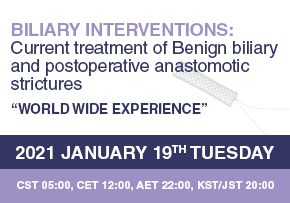 Biliary interventions: Current treatment of Benign biliary and postoperative anastomotic strictures
Biliary interventions: Current treatment of Benign biliary and postoperative anastomotic stricturesBiliary interventions: Current treatment of Benign biliary and postoperative anastomotic strictures● DATE: 19th January, 2021● TIME: CST 05:00, CET 12:00, AET 22:00, KST/JST 20:00● MODERATOR: Arthur Kaffes (Australia), Dong Ki Lee (Korea)● LECTURE: Tatsuya Sato (Japan), Deepak Joshi (UK), José G. de la Mora-Levy (Mexico)● LECTURE ABOUT:- Tatsuya Sato (Japan) "Outcomes of management for benign hepatico jejunostomy stricture"- Deepak Joshi (UK) "Endoscopic treatment of Benign biliary Stricture & Post L.T.A.S."- José G. de la Mora-Levy (Mexico) "Less common and potential future use of the Kaffes Stent"● REGISTER LINK: bit.ly/KaffesWebinar_W
20.12.29 -
 Lectures for EUS-guided RFA, EUSRA
Lectures for EUS-guided RFA, EUSRALectures for EUS-guided RFA, EUSRA● DATE: 7th January, 2021● TIME: 1PM CET● INVITED PANEL: Dongwan Seo (Korea), Stephen Pereira (UK), Pradermchai Kongkam (Thailand), Nirav Thosani (USA)● LECTURE ABOUT:- Dongwan Seo (Korea) "EUS-RFA of pancreatic cystic tumor"- Stephen Pereira (UK) "EUS-RFA of benign pancreatic and adrenal tumors"- Pradermchai Kongkam (Thailand) "EUS-RFA of Unresectable pancreatic cancer"- Nirav Thosani (USA) "EUS-RFA of borderline resectable pancreatic cancer"● REGISTER LINK: https://bit.ly/EUS-RFA_W
20.12.15 -
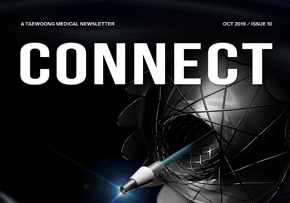 CONNECT GLOBAL issue 10, 2019 19.10.30
CONNECT GLOBAL issue 10, 2019 19.10.30 -
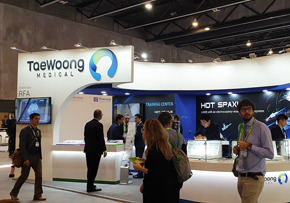 United European Gastroenterology Week 2019
United European Gastroenterology Week 2019United European Gastroenterology Week 2019UEGW 2019 was held in Barcelona, Spain from October 21st to 23rd. Taewoong Medical participated as an exhibitor and opened a 40 sqm peninsula booth. The booth was decorated with the newly launched product, Niti-S™ HOT SPAXUS™. One day before the exhibition, Taewoong Medical invited their sales representatives to a Partners’ Day event and shared the Product News including the new launching of HOT SPAXUS™ and EUSTAR™ FNA needle. Thanks to Mr. Hiroshi Honoki and Mr. Doug Polzin’s sales experience sharing, the meeting was very productive and vibrant. On the 21st, Taewoong Medical held the 9th Taewoong Medical Dinner Symposium and enjoyed the evening with intensive lectures by Prof. Anthony Teoh and Prof. Carlos de la Serna.
19.10.30 -
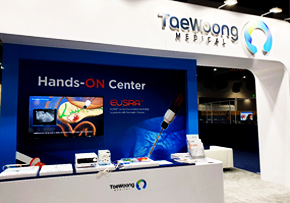 Digestive Disease Week 2019
Digestive Disease Week 2019Digestive Disease Week 2019The Digestive Disease Week® (DDW) 2019 annual meeting took place in San Diego, the beautiful city with a pacific shore of the US west coast was the host for the 50th anniversary of the DDW. Taewoong Medical participated in the meeting for the 13th consecutive time and held one of the major booths.Since ELRA™ received FDA approvals recently, all RFA product lines became available in the US market. Both EUSRA™, the needle type EUS-RFA probe for pancreatic tumors, and ELRA™, the bipolar endo-biliary RFA probe for hilar and the common bile duct received extensive attention from the attendees. In addition, new abstracts regarding ELRA™ and EUSRA™ results in various indications were also published. We appreciate for your visits and interests. We look forward to further feedbacks regarding our products.See you all next year!
19.05.30
+82 31-904-6196contact@stent.net
HOME
NEWS
News
